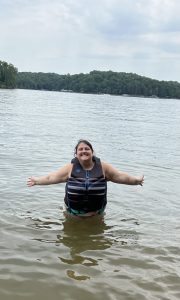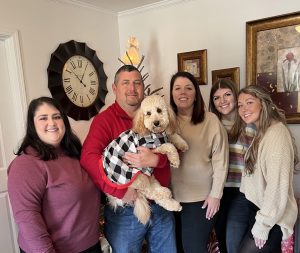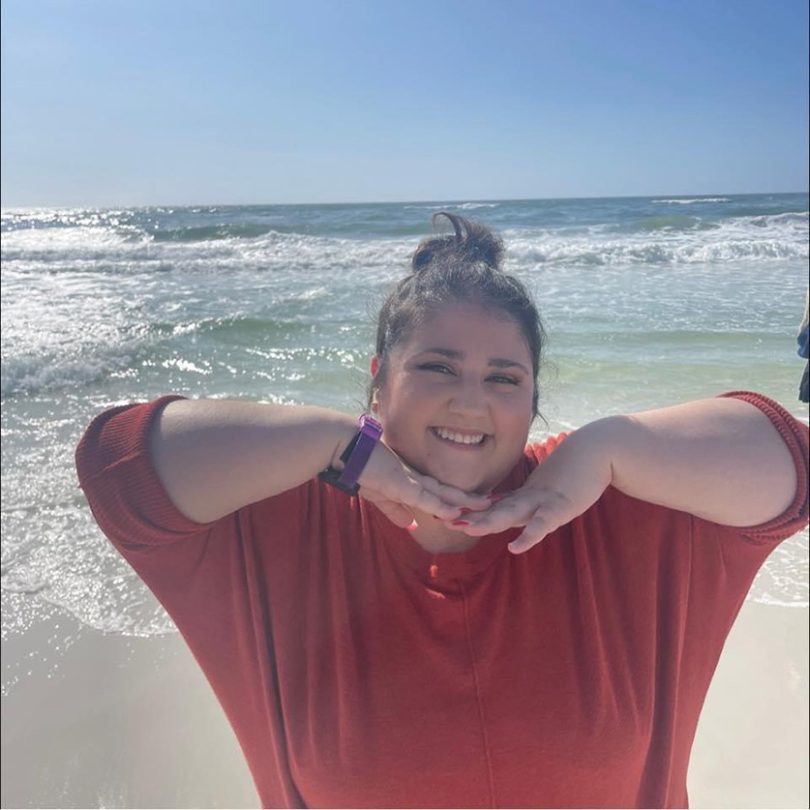For years, Hope Watson didn’t know what was happening to her, and certainly never heard the term ‘Psychogenic Nonepileptic Seizures’ (PNES).
Hope’s mom, Pam, said it all started when she and her husband would watch their 7-year-old blink her eyes rapidly or jerk her arms while eating at the dinner table.
They knew something wasn’t right, but they couldn’t figure out what was wrong.
“We never knew what was going on. It was all really confusing for me,” said Hope, who is now 24.
The Athens-area family saw doctor after doctor. They all told the Watsons it was one thing after another: depression, bipolar disorder, anxiety, ADHD – even tics from some medication she was taking.
It took a scary fall one Friday morning 11 years later for her parents to realize there was something more than what doctors were telling them.
“Her face was covered in blood,” said Pam. “What we now know happened was she was sitting on the edge of her bed, she had a seizure and fell on the floor.”
Hope went to visit with a neurologist, who put her on epileptic medications to control her seizures. It was there that Hope had an EEG that showed epileptic spikes.
From there, the Watsons lived a normal life – believing Hope’s seizure was a ‘fluke’ occurrence. But in 2019, Hope’s seizures returned, and this time more often.
“In 2020, Hope had five epileptic seizures. She had the Vagus Nerve Stimulator (VNS) device implanted for her epilepsy in October 2020. Then everything changed in March of 2021,” said Pam.
By that point, Hope was having multiple seizures daily. She was put on several medications for her epilepsy, and nothing was improving. Her life suffered because of it, forcing her to lose the ability to work, to drive, to even be at home alone by herself. Hope had around 200 seizures by that point, some going on for 30 to 45 minutes.
“I mean, it’s as simple as me not able to take a shower at home when no one was home,” said Hope. “A normal life had been taken away from me for the past six years.”
Neurologists originally told the Watsons there was nothing epileptic showing up on the EEGs in 2021, despite countless videos and first-hand experiences watching them.
In June, after months of testing and outside consultations, an EEG caught the possibility of PNES. The Watsons were told they needed to see doctors at AU Health, since the health system is one of two epilepsy centers in the state that has the resources to diagnose and check hard-to-treat seizures.

Hope was diagnosed with PNES in 2021 and has worked with Dr. Matthew Kridel and Dr. Danielle Weiss to improve her quality of life.
The Watsons were referred to Dr. Danielle Weiss, an assistant professor of neurology and board-certified epileptologist at AU Health. After reviewing home videos and conducting a multi-day video EEG at AU Health’s epilepsy monitor unit, Weiss confirmed Hope was having both psychogenic nonepileptic seizures and epileptic seizures.
“The treatment for both is different, and because of the resources available at AU Health, Hope was able to get interdisciplinary treatment – which is not available everywhere,” said Weiss. “She needed me as an epileptologist as well as a psychologist to improve her quality of life.”
The diagnosis of PNES is not easy for many doctors to make. Years of training and physical evidence are needed for doctors to distinguish between PNES and epileptic seizures, even needing the use of EEG to confirm the diagnosis. One in five people with epilepsy also have PNES, and those who have PNES may not have it diagnosed for years – leading to delays in treatment.
Epilepsy can be treated by medications and surgery, but PNES is treated through cognitive behavioral therapy. For Hope to understand and control her seizures through PNES, she worked with Dr. Matthew Kridel, a psychologist and assistant professor at AU Health.
Kridel said patients like Hope begin a cycle where having an episode creates a sense of fear. Hope explained her episodes to friends and family as having a severe anxiety attack.
Many patients tend to avoid things in response, which can accentuate some symptoms. The three P model: precipitating factors, perpetuating factors and predisposing factors are also used to better evaluate patients with PNES. Combined with neurological and biological factors, Kridel admits it’s a difficult thing for patients to understand and work through.
“We try and break that cycle by reducing fear and educating the patient, before what we call cognitive therapy,” said Kridel. “In Hope’s case, she really enjoyed a job at a nursing care facility and had to stop doing that for fear of hurting residents. Helping her reframe and restructure her thoughts that she can manage this was huge.”
Kridel and Hope work together on relaxation methods and techniques to limit the non-epileptic seizures that could come. There is no cure for PNES, so Hope understands there is nothing that can stop them entirely – but she does believe with what she has been taught, she will return to her normal life.
The relationship between doctor and patient is extremely important, but Kridel has seen that the patient also must believe in themselves. Living with any chronic illness or disability can be devastating both physically and mentally. Doctors want patients to create a form of acceptance and understanding of their conditions to help the healing process.

Hope is back at work and able to go out with friends and family without worrying about a severe PNES attack.
“Kridel said to me, ‘You’re the only person who can take control of this.’ Now I’m able to feel when something isn’t right. Instead of having these attacks, I can lay down, cross my arms and start deep breathing, and I can talk myself out of having a PNES episode, which is amazing,” said Hope.
“She is very special,” Weiss said, recalling Hope’s journey from diagnosis to where she is now. Through the resources at AU Health and Hope’s hard work, she has been able to drastically improve her life and has even spoken to Medical College of Georgia students about her life story and recovery.
Hope is looking forward to the little things: getting to drive to work, going to the bars with her sisters – feeling like herself. She wants anyone dealing with this to know that they are going to be okay. If you have the right mindset, you can head back into the world and back to your life.
“She was in a really dark place and didn’t see a future,” said Pam. “Weiss taking the initiative and explaining what this is and how it can be treated, and Kridel and Hope putting in the hard work – I think Hope sees a future.”
“I just want to be able to put myself back out there, be comfortable and not have to wonder if I’m going to have a [PNES] attack. I can get out in the world without any fears,” said Hope.


